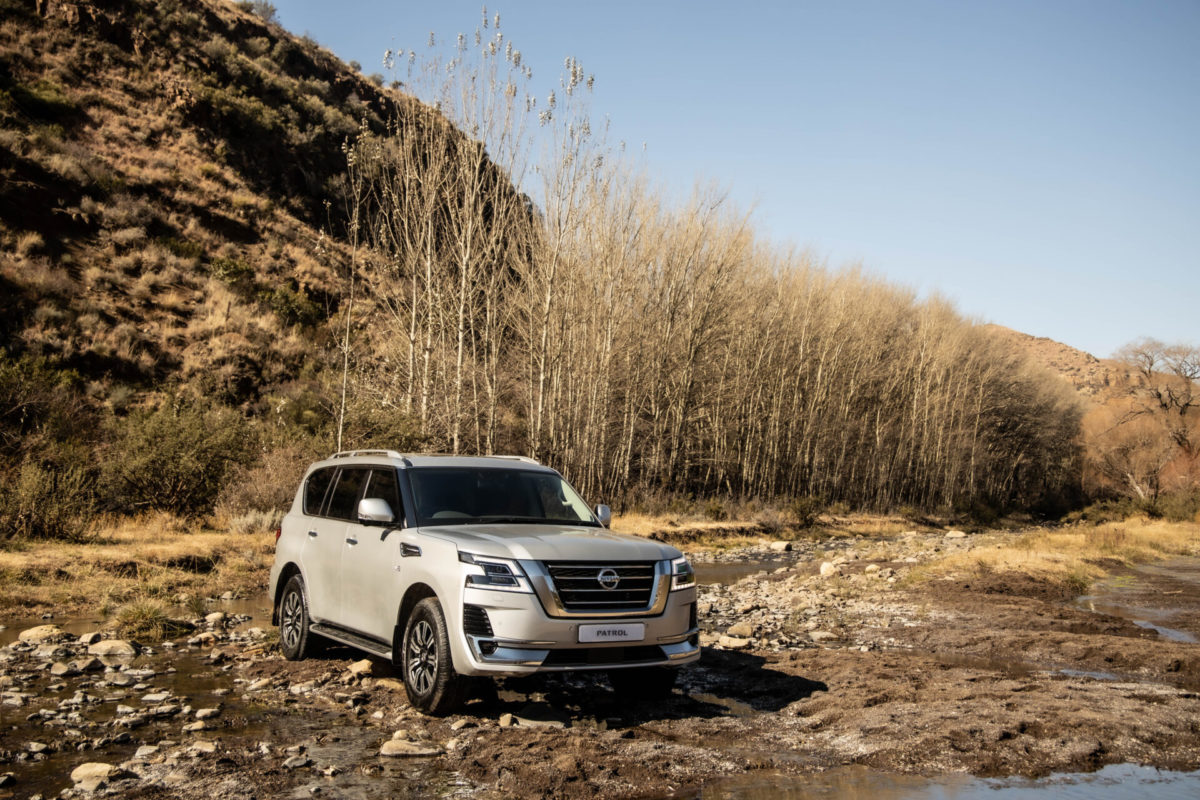The stylish the New Nissan Patrol is now available
…the new Patrol will give its drivers and passengers a luxurious drive…
The latest edition of the legendary Nissan Patrol has arrived in South Africa. The New Nissan Patrol is an unmatched icon with enhancements that offer customers even higher levels of sophistication, comfort, and intelligence.
The new Patrol exhibits the best of what Nissan Intelligent Mobility has to offer with enhanced luxury tech features in addition to the striking new design. At the same time, the most desirable Patrol yet retains its exceptional off-road capabilities and class-leading power.
Nissan’s flagship 4×4 line-up is steeped in tradition and heritage, preparing to celebrate its 70th anniversary next year. The new Patrol continues its legacy as a hero of all terrain.
“Engineered with the latest intelligent mobility technologies, the new Patrol will give its drivers and passengers a luxurious drive,” said Kabelo Rabotho, Director of Marketing at Nissan South Africa. “The legendary vehicle is one of Nissan’s most cherished models with sophisticated technology as well as a long and proud heritage. We’re confident the new model will provide drivers with unrivalled luxury.”
Unmistakable Exterior
Signature design changes for the new Patrol include Nissan’s V-motion grille, interpreted in a new way for SUVs. Along with the new boomerang-shaped LED headlights, the revised grille highlights the Patrol’s strong, angular front.
At the rear, the Patrol’s new taillights also sport the boomerang shape. They are seamlessly integrated along with a large chrome nameplate and sequential rear turn indicators, which have been added for the first time on a Nissan vehicle.
Prestigious Interior
Attention to detail and luxury means a truly first-class travel experience for all. Inside, the class-leading interior space sports a 13-speaker Bose premium sound system, a multi-screen DVD entertainment system, 8” rear seat entertainment, independent wireless headphones and remote-enabled passenger vehicle infotainment. Allowing all passengers to enjoy the ride.
The new Nissan Patrol puts control at your fingertips with an 8” colour touch information screen, Bluetooth® hands free and audio streaming, climate control, Intelligent Key® with push button start and remote keyless entry – all helping you to get to your destination in a way that’s connected and effortless.
New diamond-stitch quilted leather seats with added padding provide a luxurious feel, as does the new hand-stitched steering wheel. In addition, climate control and powered lumbar support are available for the front seats.
The Latest in Tech
The Nissan Patrol leads with Nissan Intelligent Mobility, equipped with driver assistance technology that helps you see and sense more. The new Patrol is equipped with Intelligent Emergency Braking with pedestrian detection and the Intelligent Forward Collision Warning system that warns the driver of risks that lie beyond the driver’s forward field of vision.
The advanced radar system does not only sense the relative velocity and distance of a vehicle directly ahead, but also that of a vehicle travelling in front of the preceding one. Also included is standard Intelligent Cruise Control and Intelligent Driver Alert, which analyses the driver steering behaviour to signal and alert if signs of drowsiness, or inattention are detected.
Pure Power and Advanced Capabilities
There is no substitute for power and torque, and the Nissan Patrol’s 5.6L V8 engine allows you to go where others don’t dare. With this class-leading engine boasting 298kW of power, and an exceptional 560Nm of torque, this powerful engine allows you to take command of any terrain.
Pricing
The new Nissan Patrol is the perfect SUV for adventure on any South African road. The starting price for the new Patrol will be R1 515 700.










